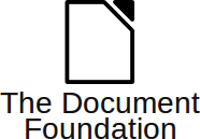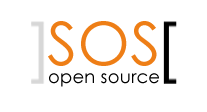EU-funded Projects and Online Dissemination (part II)
“EU-funded Projects and Online Dissemination” inspired some reactions, also from one of the Future Networks projects: the SAIL project.
Johan Myrberger – Head of Multimedia Campus at Ericsson – replied to my suggestions with a blog entry around Online Dissemination, an interesting opportunity to talk more about FP7 dissemination do’s and don’ts.




Johan 4:45 pm on November 15, 2010 Permalink
Thanks for the follow up!
I agree to what you state above in general, and as usual there’s always a balance between different options…
Some (personal) comments to the blog post:
– Indeed the domain name itself has an impact on the SEO ranking, although I don’t have a clear picture of to what extent.
You should also remember that the domain name is not only important from a SEO point-of-view, but also to which extent it is easy to remember once you’ve seen it or heard it.
From that perspective I think http://sail-project.eu is “OK”, as it bears the branding of the project (as I mentioned earlier I personally might have excluded the “-” though.
(And yes, from a branding/SEO perspective the usage of such a common word as SAIL could be discussed.)
From the perspective “few will search for SAIL” – partly right. Some of the potential audience will have picked up the name SAIL and are looking for more information. Of course there’s also a large audience interested in the topics as such (future internet etc), but I still believe there’s a high value in having a domain that ties into the project name.
Multiple domain names is of course an option, but at the moment we will stick with one.
As for other other Social Media channels, we will continue to explore them (watch for future blog posts at http://sail-project.eu/sailorsinn ).
And finally – transparency. Yes, it matters (and I am a big fan..), but again, there’s always a balance among several stakeholders. I do believe that the blog and other activities will remove some of the opaqueness though.
Roberto Galoppini 11:17 am on November 19, 2010 Permalink
Hi Jo
ahan,it is an interesting conversation, here some feedback.
All in all Social Media Monitoring tools would hardly be of help to monitor a common word like “sail”. Some examples of domain names you might add: futureinternetworld and futurenetworksworld are all (*.net, *.com, *.org, etc) available.
About transparency. It seems like if for many EU-financed research projects the idea of transparency is a sort of “nice to have”, while actually to me it is more of a “must have”. I will lobby in the future around this and other issues that should be taken much more seriously by public-funded research projects.
Johan 1:27 pm on December 8, 2010 Permalink
Hi Roberto, time for a long overdue reply…
For the domain name discussion – I do feel a bit confused.
You seem to mix two aspects:
Originally I took your suggestion as “use additional domains to increase visibility”. From that perspective:
– Are you suggesting that the additional domains would have the same content as the “main” or original domain? If so, I believe that there a risk in terms of search engine ranking to deploy multiple copies of the same content.
– One argument (for multiple domains) might be that each domain can “support” the visibility of the others by links. Besides that this is a bit of a grey zone (don’t want to host a link farm..) we actively decided to host the blog on the same domain as the “main” web site – and I still think this is a valid decision.
– Another argument would be that multiple domains might help you occupy more of the search results (as in some cases only one or a few results from each domain is displayed). Might be true, but such techniques might be more relevant for more commercial web sites – I do not see a value to apply this to SAIL.
Then you introduce the notion of how “traceable” it would be in eg Social Media. True, a “truly unique” term might be good from that perspective, but I do not see that another “more generic” term or domain (such as futureinternetworld) would add any value.
To sum up where we currently are in SAIL:
– Despite the “common” term SAIL we rank fairly high on relevant searches already (and this is the type of searches we see drives a large part of the visits) (Note – we don’t rank “high enough” on searches of “sail” alone, but a number of relevant combinations (sail project, sail eu, sail fp7 etc) puts us high up in the results. And we see that people actually use such terms to find us)
– In terms of monitoring mentions in Social Media we do have some additional work to do (besides eg simply tracking in-links etc) – I do not see the term “sail” as an issue though.
(As this will be more relevant when we take the next step to activate some “social media channels” I’m sure we’ll get back to this topic.)
And finally, transparency…
I noticed that you made another blog post on this topic. Will probably post something around this on our blog, as it is an important and partly tricky area.
One question/comment though – I think that the terms “transparency” and “visibility” are tightly connected, but still are different terms. Would you agree on that?
Roberto Galoppini 2:32 pm on December 9, 2010 Permalink
Good to see you again Johan.
Multiple domains pointing to the very same website badly affect search engine ranking indeed, but you can use 301 redirections. In your specific case a similar approach could be of help if you change your mind about your domain name.
You’re right saying that your google positioning is good if you look for “sail project”, but only a tiny fraction of the internet population interested in future networks would ever google for SAIL related keywords, though.
Track social media maybe not an issue, unless you want to promote a specific product/service and measure results.
EU-funded Projects: Transparency and Beyond entry makes clearer what I meant, stay tuned for more on this subject.